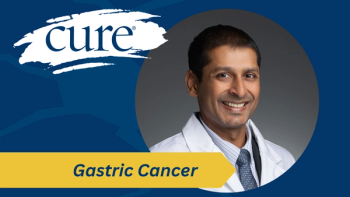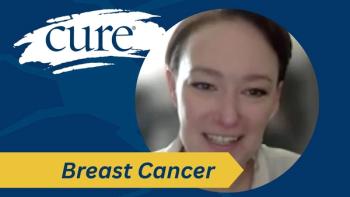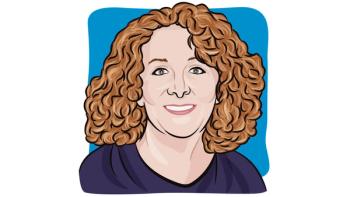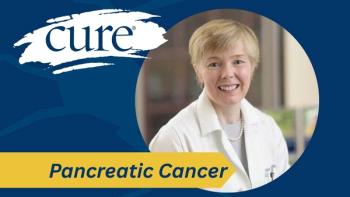
Role of Radiation Continues to Change in Elderly Patients With Breast Cancer
The role of radiation continues to change for patients with breast cancer, especially for those over the age of 70, for whom radiation might not be the best option.
Radiation therapy may not always be the best option for patients with breast cancer who are over the age of 70, according to Kevin Hughes.
In an interview with CURE, Hughes, associate professor of Surgery, Harvard Medical School, discusses the pros and cons of radiation therapy in elderly patients, as well as luminal A patients, and the overall changing role of the therapy in the field.
What is the role of radiation therapy in elderly patients undergoing breast conserving surgery?
We're looking at breast conservation in women over the age of 70. When we looked at this within the CALGB Cancer and Leukemia Group B Protocol 9343, we took women 70 and above with stage 1 breast cancer who were estrogen receptor (ER)-positive and randomized them to radiation versus no radiation. We found that there was a small decrease in the rate of recurrence with radiation, which was not unexpected, but there was very little other benefit. The decrease in breast recurrence was about 7 percent at 10 years, which is a very minimal decrease.
Overall, what we feel is that radiation is not necessary in women who are 70 and above who are ER-positive and are clinical stage 1. Even though we have identified that, we have found that the community continues to radiate them. We need to move away from the approach of radiating every breast cancer that comes in the door and begin to stop radiating women over the age of 70 with early breast cancer.
Are there quality of life issues that occur in elderly patients treated with radiation therapy?
We also need to extend that to younger women, when we look at luminal A cancers. Women over 50 may not need radiation either, and there are ongoing trials. The PRECISION trial is one where women 50 to 75 clinical stage 1 ER-positive will be treated without radiation, and I think that is the future.Radiation therapy is very well tolerated. Despite the fact that it's well tolerated, it's a major inconvenience for older women. Whether they have to come in every day for six weeks, whether they have to come in every day for four weeks or for two weeks, it is still inconvenient. That adds to the stress of their lives, and they often don't have people who can bring them back and forth for treatment or they often don't have the resources or support network. This is a major problem.
For those who live far from radiation therapy centers, often, they can't get the radiation at all. In the past, this has been dealt with by doing mastectomies that were totally unnecessary. Now that we recognize that the radiation is not required, it's better that they not get a mastectomy and save their breast and have the minimal in-breast recurrence risk that we're concerned about.
What should the approach to these elderly patients be in the future?
Will there continue to be a role for radiation in other breast cancer subtypes, such as HER2-positive and triple-negative?
Overall, radiation is not a dangerous thing to do, it's not a detrimental thing to do, but if you don't need it, then any level of risk is too much.Breast cancer care over the last few decades has been an approach to doing less and less to get the same level of care. We've gone from radical mastectomy, to simple mastectomy, to sentinel node biopsy. We've gone from chemotherapy for everybody, to chemotherapy for those who are genomic testing appropriate, and this constant drop in treatment has been extremely effective at doing less and getting the same outcome. v We need to do the same with radiation. Radiation has some benefit for older women, but not enough to make it worthwhile. It has some benefit for women who are younger, who have luminal A cancers or very low-grade cancers, but probably not enough to make it worthwhile. Now, we have to start looking at when we can pull back on radiation. We cannot just go from six weeks to four weeks, or just go from whole breast to partial breast, but when can we just avoid radiation all together, and that's the future. We know that triple-negative breast cancers are extremely aggressive. We know that HER2-positive cancers seem to be aggressive as well, and these patients seem to benefit from radiation. This is not a statement that all radiation is bad, by any means. There are patients who need it, and those at the highest risk certainly do, and I would currently put the triple-negative and HER2-positive patients into that category.
What is the optimal treatment plan for patients who don't have radiation?
What role does breast density play?
As we move along and get better treatments such as Herceptin (trastuzumab) or other similar treatments, potentially all other therapies will go away. There will be no radiation, there will be no surgery; it will just be medication. For the time being, we need to identify the minimum treatment we can give to gain the maximum outcome, and that does include radiation for those women who are in the triple-negative and HER2-positive category for this point in time.For women who are clinical stage 1, over the age of 70, lumpectomy with a clear margin is appropriate. With these patients, we follow that with endocrine therapy like aromatase inhibitors or Nolvadex (tamoxifen), but beyond that just routine follow-up. We tend to see our patients every six to 12 months with yearly mammography, and we feel that this is the best care with the least impact on their lifestyle.Basically, there have been multiple states that have put in density legislation where it requires centers to tell women what their density is. This is not a terrible thing, but it has caused a tremendous amount of confusion because breast density is not very well understood. Density has two impacts. One impact is that it may mask a cancer, making mammography less effective; secondly, it may increase risk. In terms of masking a cancer, we found that digital mammography shows less masking of cancer than there was with film screen. Therefore, density becomes less important, and now with digital tomosynthesis, we can look through dense breasts as well and still see cancers. Adding whole breast ultrasounds on top of that for the densest breasts will find more cancers, but the question becomes, "Is it worth the additional costs of those interventions?"
The most important thing in terms of screening is not just looking at density, but looking at the risk level of the patient. The first thing you need to do is a thorough risk assessment. If the patients have genetic risk, they need genetic testing. It doesn't matter what their density is. If they're not at genetic risk, the next question is about what their lifetime risk is. By the American Cancer Society Guidelines, women with a 20 percent or greater lifetime risk need an MRI. That's regardless of their breast density.
The patients who are under the 20 percent lifetime risk are the ones where this becomes an issue. For those with less than a 15 percent lifetime risk, average risk of breast cancer, digital screening mammography is plenty. It seems to be in the 15 percent to 20 percent category where there may be some advantages to additional screening, but it has not yet been proven. Currently in the 15 percent to 20 percent category, the intermediate risk category, they are not eligible for MRI. Therefore, you can do a whole breast ultrasound, or digital tomosynthesis may be enough.
At this point in time, the digital tomosynthesis is not quite as good as whole breast ultrasound, but the differential in cost may not make the whole breast ultrasound worthwhile. That's what has to be decided on a healthcare system basis.





